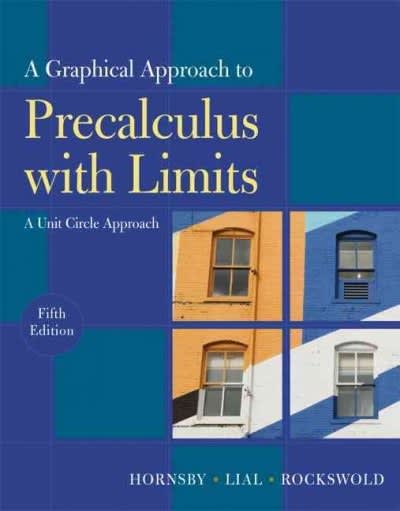Question
1)According to a university's reports,the GPAs of all of its students has a mean of 3.3 and standard deviation of 0.22. Females make up 40%
1)According to a university's reports,the GPAs of all of its students has a mean of 3.3 and standard deviation of 0.22. Females make up 40% of the entire student body.
If you were to take a large number of random samples of size n = 35 and record the proportion of females for each sample, the mean of these sample proportions would be approximately
Group of answer choices
35
0.40
0.22
3.3
0.083
0.037
2)Consider the following two-way tables illustrating two possible samples designed to study the prevalence of a certain trait among men and women in the population of U.S. adults. The rows represent the gender of the individuals in the sample and the columns represent whether or not the individuals have the trait of interest.
Your task is to determine in which of the two samples being female and having the trait are independent.For each sample, perform two tests of independence--one using the joint probability P(A and B) and one using a conditional probability P(A | B) or P(B | A)--with the appropriate comparisons (you should thus have four comparisons in total). These comparisons may require you to compute additional marginal probabilities. Show your work for each computation. In which sample are being female and having the trait independent?
|
|
3)Humans are split into four blood type groups based on the ABO model. In this model, the relationships between genotypes and phenotypes are as displayed in the table below. Let's say we know that the marginal frequencies for each allele are a: 26.5%, b: 7.2%, and o: 66.3%. Assuming independent inheritance of alleles, what are the expected blood type frequencies? That is, P(a) = .265, P(b) = 0.072, and P(o) = 0.663. Here we use capital letters to refer to the blood types and lower case to refer to the alleles; note that P(A) DOES NOT necessarily equal P(a), etc. Keep in mind that the sum of frequencies must equal 1.
Hint: Think of the possible ways to get each genotype. You can model this problem as rolling a pair of weighted three-sided dice.
| Blood type (phenotype) | Genotypes | Expected probability |
| A | 2 a, 1 a & 1 o | P(A) = [ Select from the following "7.02%", "24.59%", "26.5%", "42.16%"] |
| B | 2 b, 1 b & 1 o | P(B) = [ Select from the following "0.52%", "5.29%", "7.2%", "10.07%"] |
| O | 2 o | P(O) = [ Select from the following "33.15%", "43.96%", "66.3%", "81.42%"] |
| AB | 1 a & 1 b | P(AB) = [ Select from the following "1.91%", "3.82%", "29.88%", "33.7%"] |
Step by Step Solution
There are 3 Steps involved in it
Step: 1

Get Instant Access to Expert-Tailored Solutions
See step-by-step solutions with expert insights and AI powered tools for academic success
Step: 2

Step: 3

Ace Your Homework with AI
Get the answers you need in no time with our AI-driven, step-by-step assistance
Get Started


